At this point, Via del Ferro (Iron Way) descends into Ornica, runs through its rich historic centre and, after going through the hamlet of Sirta, it climbs the slopes of the mountain Pizzo del Rocco, reaching Colle Dudello (altitude 1,337 m) from where the final destination of Valtorta can be seen. As previously, in this section the Way is mainly along footpaths, with short stretches on municipal roads in the village of Ornica.
Tracciato Storico
Itinerario escursionistico
Difficoltà: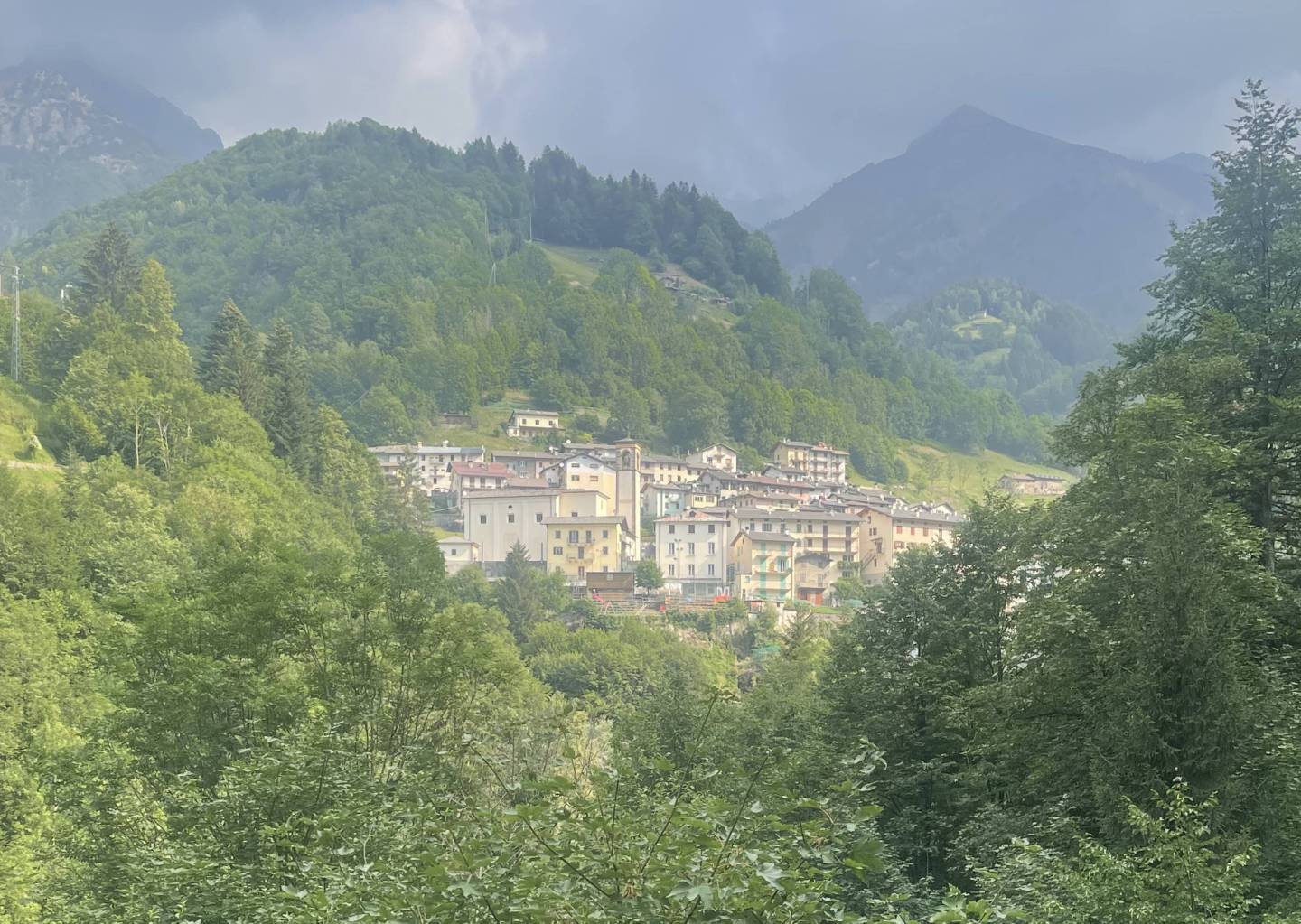
Via Fratelli Calvi is the main street that runs level through the centre of the ancient village of Ornica, a group of buildings at the confluence of the Inferno and Salmurano valleys, at the foot of the long moraine that branches from the Orobic ridge. The village’s compact structure reflects both defensive needs and to leaving as much land as possible for agriculture, which necessarily has to be concentrated at sites that are less steep. The houses are rather tall, almost forming a single group of buildings that include and conceal the maze of alleys, squares, stairways and porticoes that wind through the settlement (text from the Municipality of Ornica’s board with a map of paths).
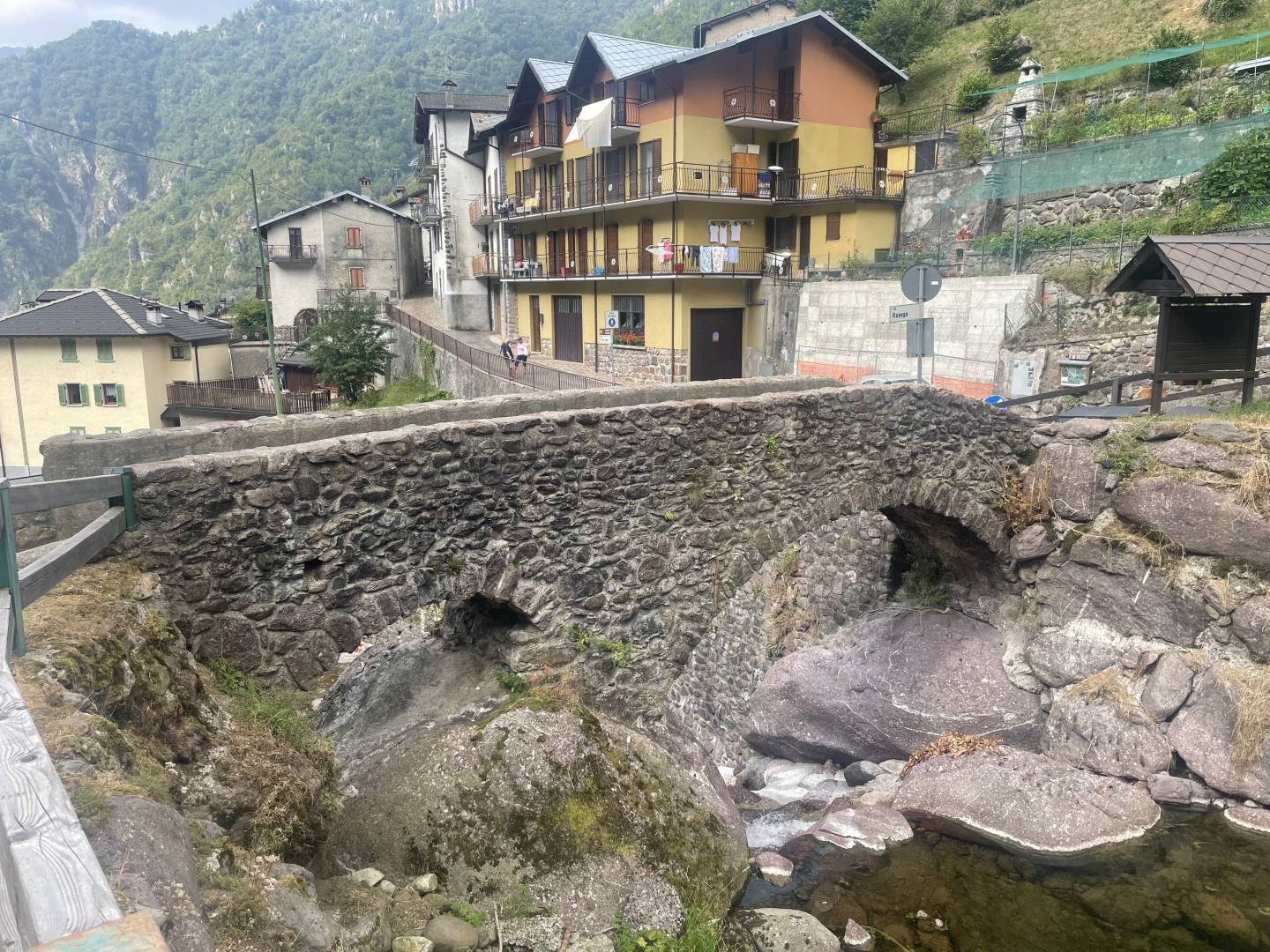
An ancient, restored stone bridge with two round arches of different widths with side parapets and cobbled paving. It is located along the traditional route to Cusio.
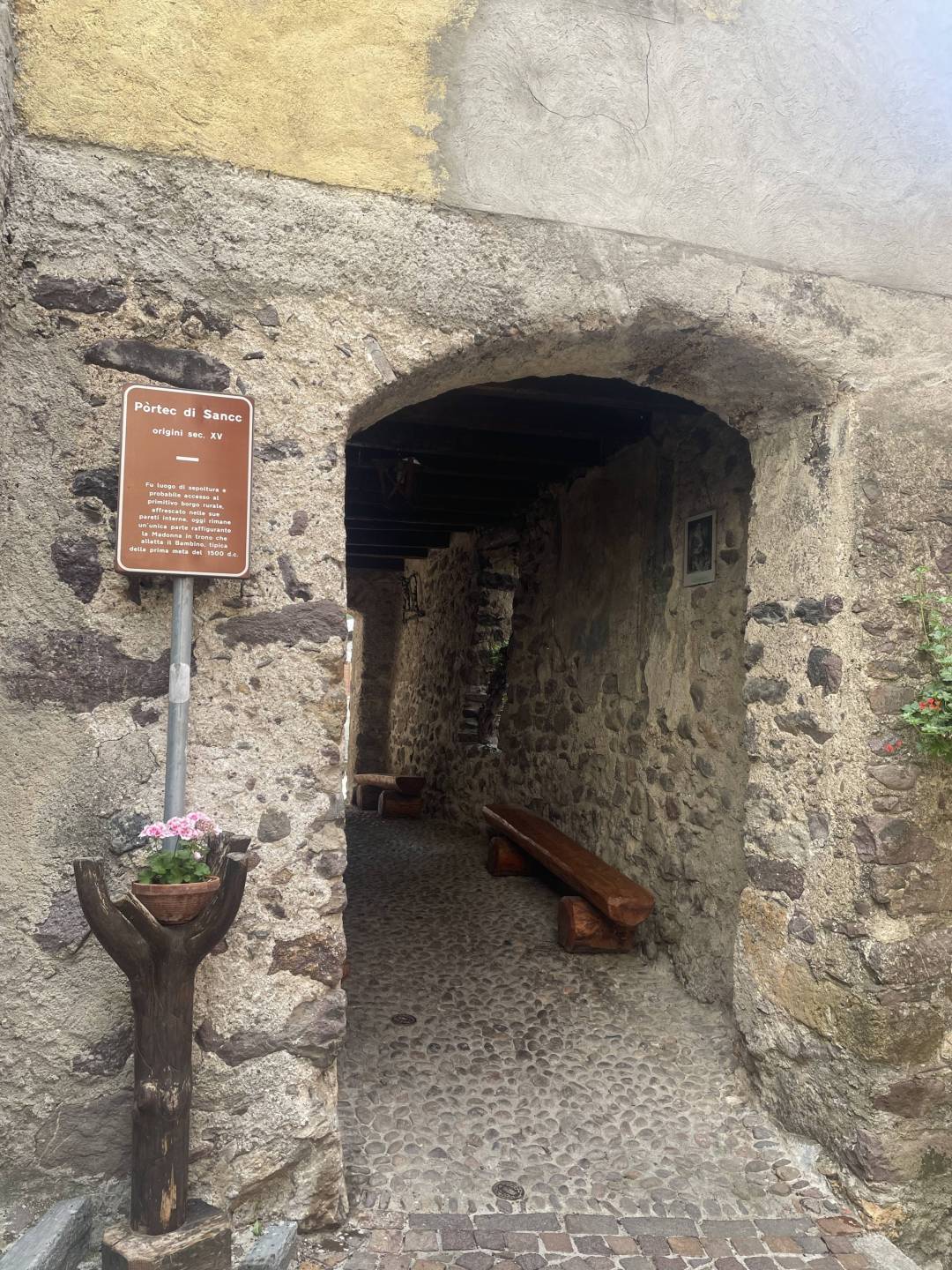
. A distinctive covered way, dating back to the 15th century, once used as a burial-place for the poor and a primitive fortified gate into the village. There are still remains of the frescoes that once covered its interior walls. Today just one part has survived, in very bad condition, depicting the Madonna enthroned suckling the Child, in a style typical of the first half of the 16th century.
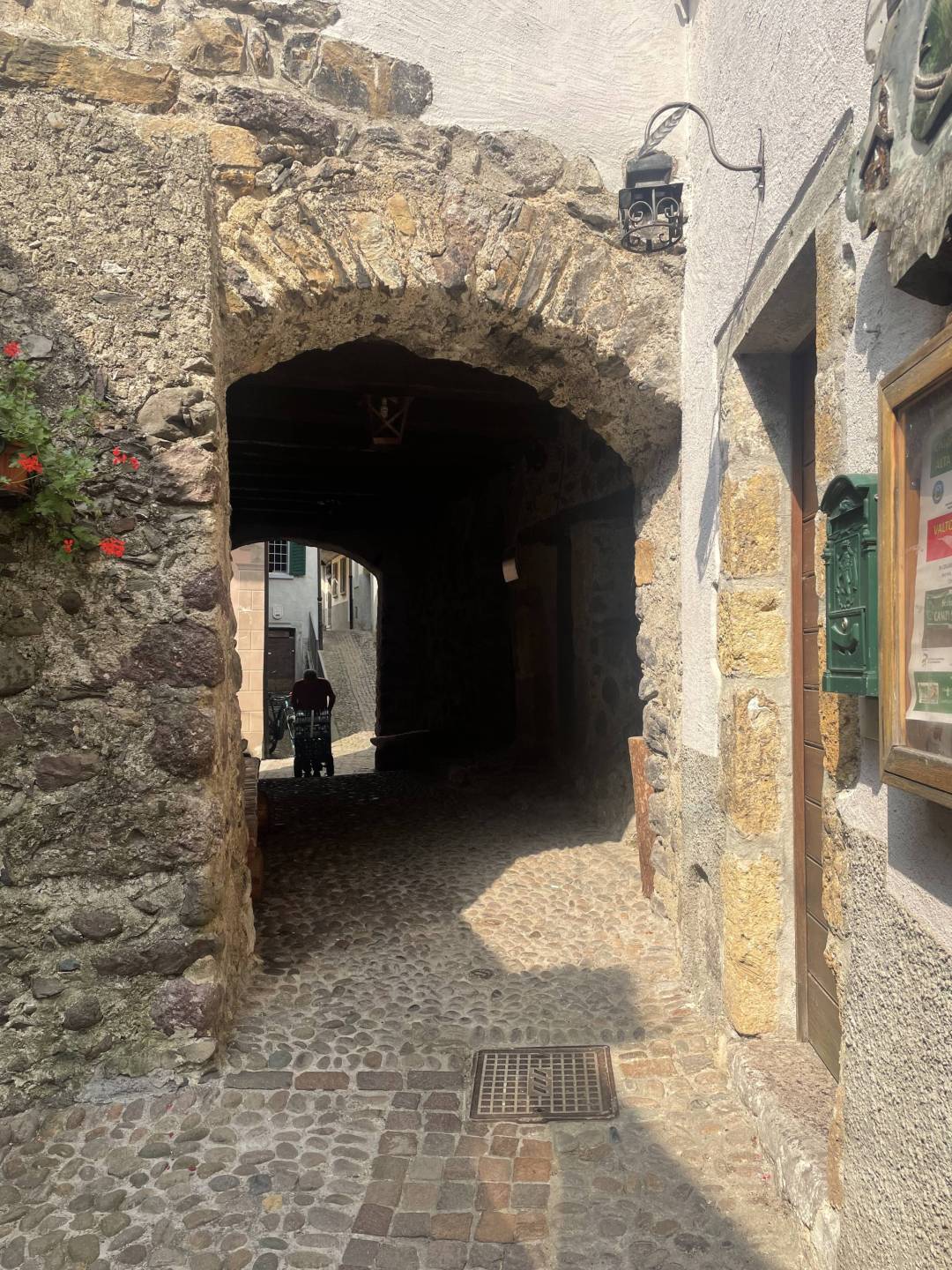
Piazza del Rastèl. Piazza del Rastèl, which literally means “Square of the Rake”, in reference to an implement used by farmers in the meadows, was a piazza on Ornica’s historic street, amidst old houses and crossroads, with alleys and steps radiating outwards from this central point in the local road system. According to popular tradition, the name apparently refers to the way in which the side streets converged onto the main street, like the teeth of a comb or a rake. Here, people would meet and stop to talk, and men above all would gather at the Locanda Ruffoni inn, called “Letizia” after the original owner of this hostelry, bakery and pastry shop, famous throughout the valley. So the social gatherings in the piazza and people’s leisure time at the hostelry evoked the idea of the hay that is collected by the farmer’s rake. Rastèl is also a dialect term that refers to the location where hay or forage is stored. And according to local lore, there was once a farmstead here, a “tegìa” (haybarn) where the hay used for cattle in the winter was kept. Today on the square, some ancient buildings can be admired, with attractive balconies and portals in carefully-hewn and sculpted serizzo stone and an old house with a beautiful door decorated with studded nails, distinctive elements of simple architecture that is nonetheless rich in technical and decorative solutions.
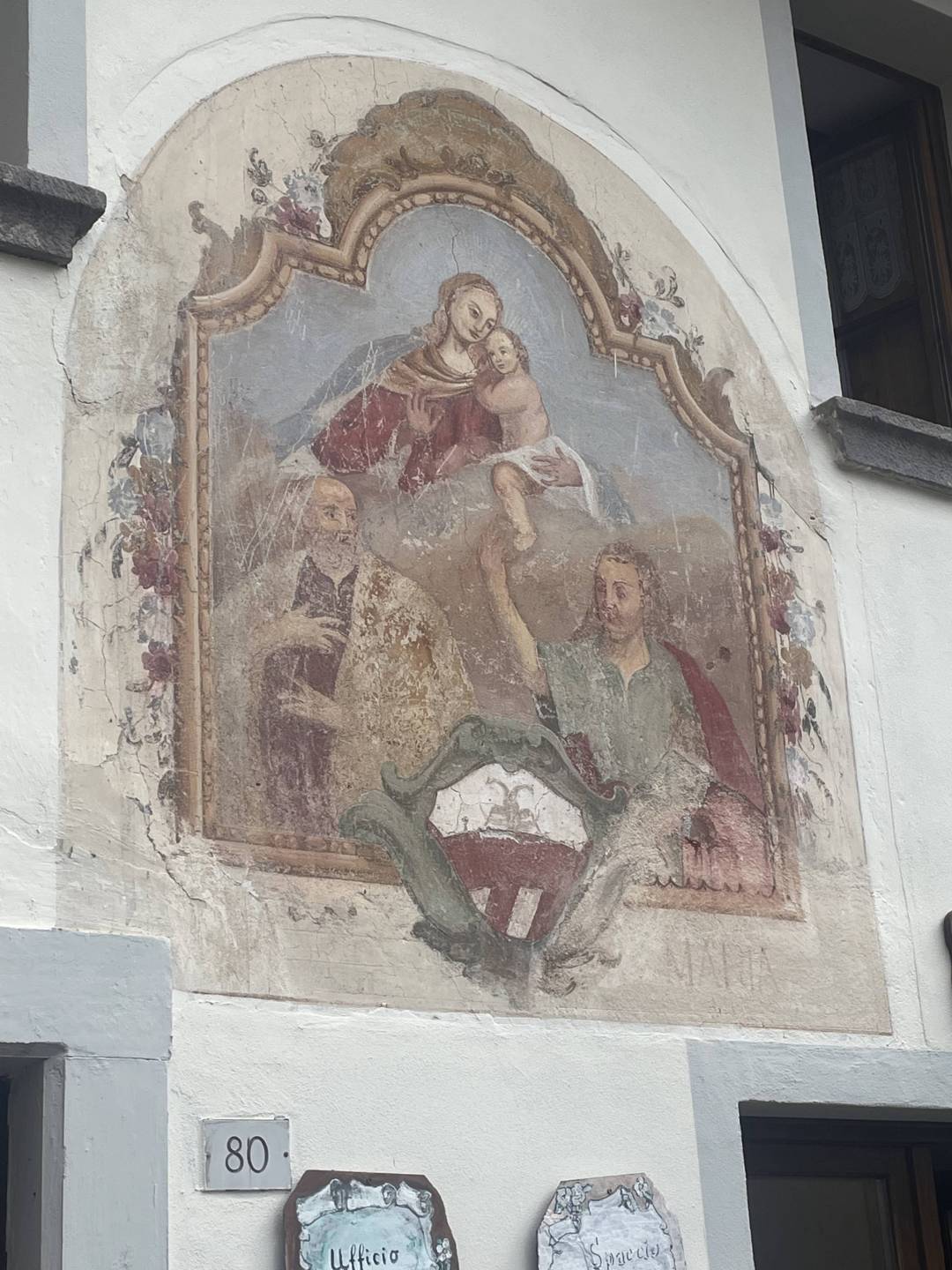
In this small square, the community of Ornica have commemorated the two brothers Carlo and Luigi Calvi, members of an important local family who died for their country in the Great War. They were the sons of Pietro and Teresa Calvi. Pietro (1852-1921), an elementary school teacher in Olmo, Averara and for 16 years in Valtorta, had been the mayor of Ornica for 20 years and placed great hope in his children. Luigi was a student in the second year at high school and dreamed of becoming a teacher like his father, when in 1912 he was called to arms and saw action, with the rank of lieutenant, in the Libyan war, from which he returned in 1913. When the Great War broke out, Carlo and Luigi were called up once again. In the valleys of the Friuli region, Carlo was mortally wounded in heavy fighting on 7 December 1915. His brother Luigi, a lieutenant in the Alpine corps, died on 23 August 1917 at Bainsizza in an attack on the enemy, in which he, the commander, was in the lead, an example to his soldiers. For this action he would be decorated with a silver medal for military valour. These are examples of the Ornica community’s dedication and sacrifice for the country (more information in the file on The Land of the Baschenis). The house, at number 80 in the square, bears the Calvi coat of arms and a fresco of the Madonna and Child with Saints.
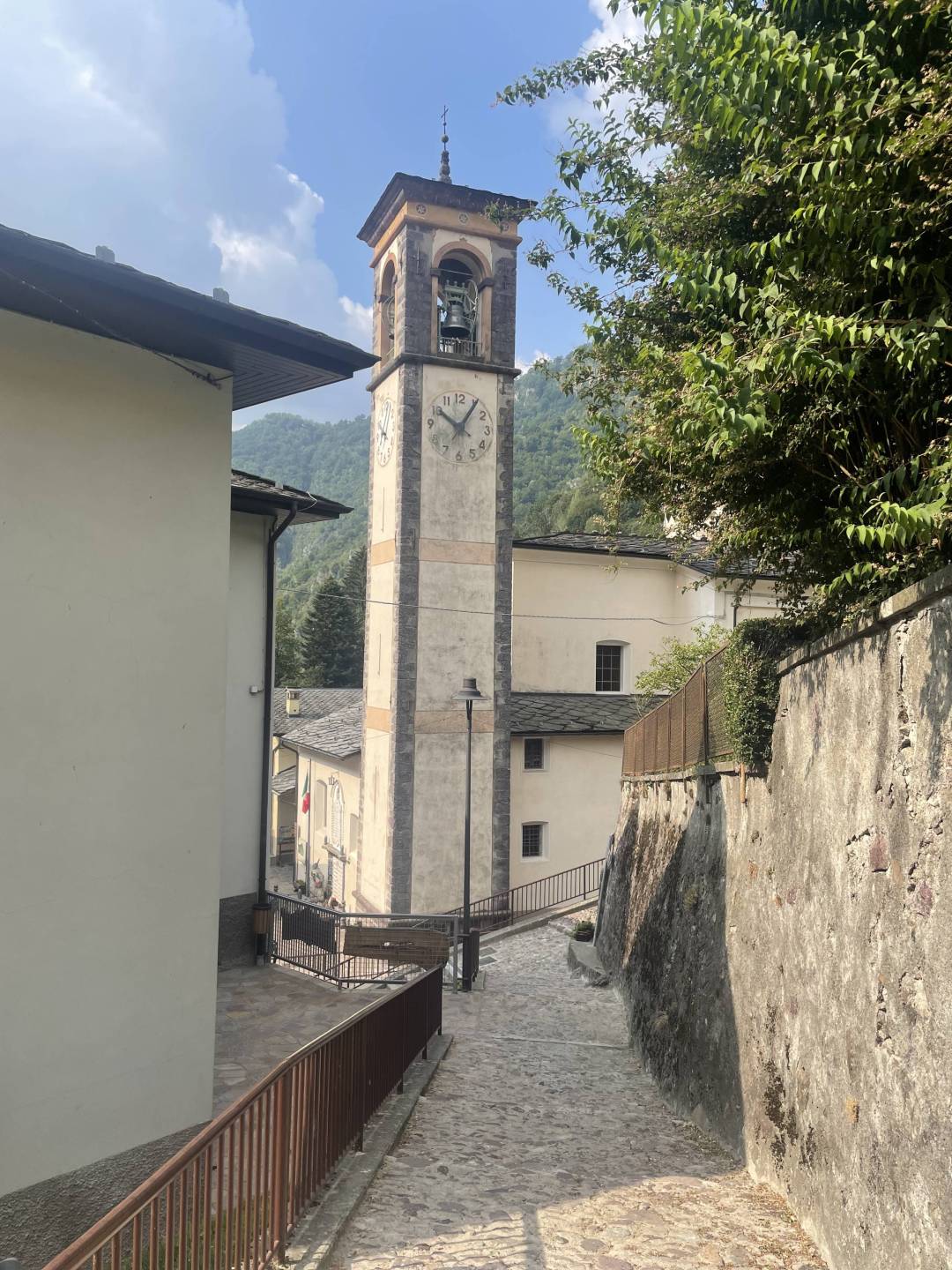
The earliest mention of the existence of a church in Ornica dates back to the 14th century, when a small chapel dedicated to Saint Ambrose was erected on the site of the present building, presided by a chaplain. The chapel was under the authority of the parish church of Santa Brigida, from which it became independent in 1456, becoming an autonomous parish given an annuity for the priest, paid by the population. The deeds relating to San Carlo’s (Saint Charles’) pastoral visit in 1566 provide us with some information about this church: it had five altars, of which the high altar was consecrated and adorned with a beautiful altarpiece (probably the polyptych of Saint Ambrose); it also had a tiny sacristy and a bell tower with two bells. Today, only the presbytery of this church, which was very small, still remains, corresponding to what is now the sacristy, with a nave in the shape of a Latin cross, and a fresco by Angelo Baschenis. The present building, in late Baroque style, with a Latin cross nave in three bays and with a shallow segmental vault, was built in the first half of the 18th century, commissioned by Don Giacomo Pesenti, who invested a large part of his own private wealth into it. A notable feature of the church comprises the polyptych of Saint Ambrose, a 16th-century work attributed to a painter from the school of Cima da Conegliano. The polyptych is in its original frame, exquisitely carved and gilded, and it is divided into four registers comprising no less than 14 panels (more information in the file on The Land of the Baschenis).
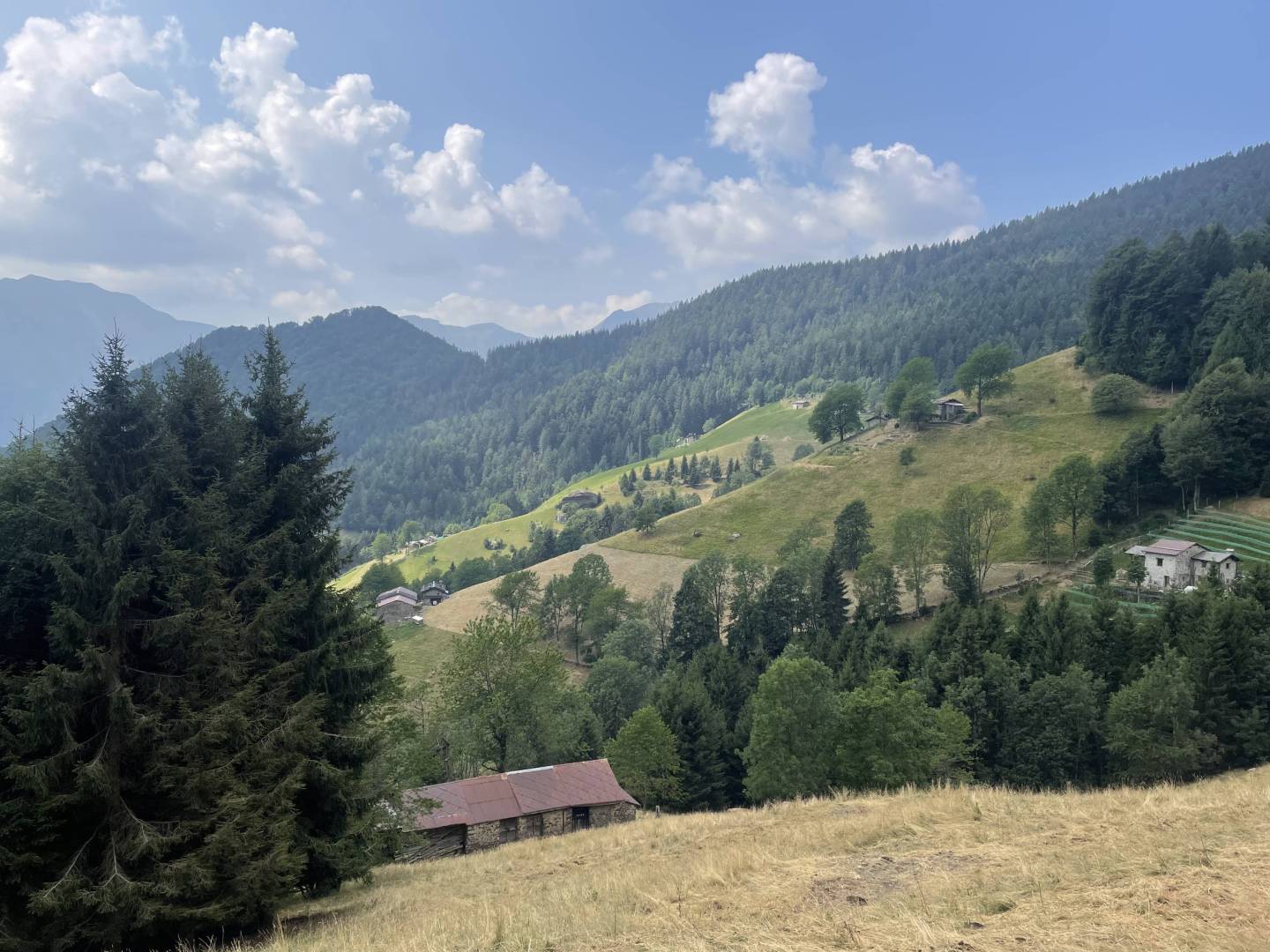
From the main road, or “Stradù”, thus known for its importance in the context of the ancient municipal road system as the main link to Valtorta, there is an extensive view of the beautiful meadows and pastures that overlook the town centre and are part of the landscape of the lower Valle dell’Inferno valley.
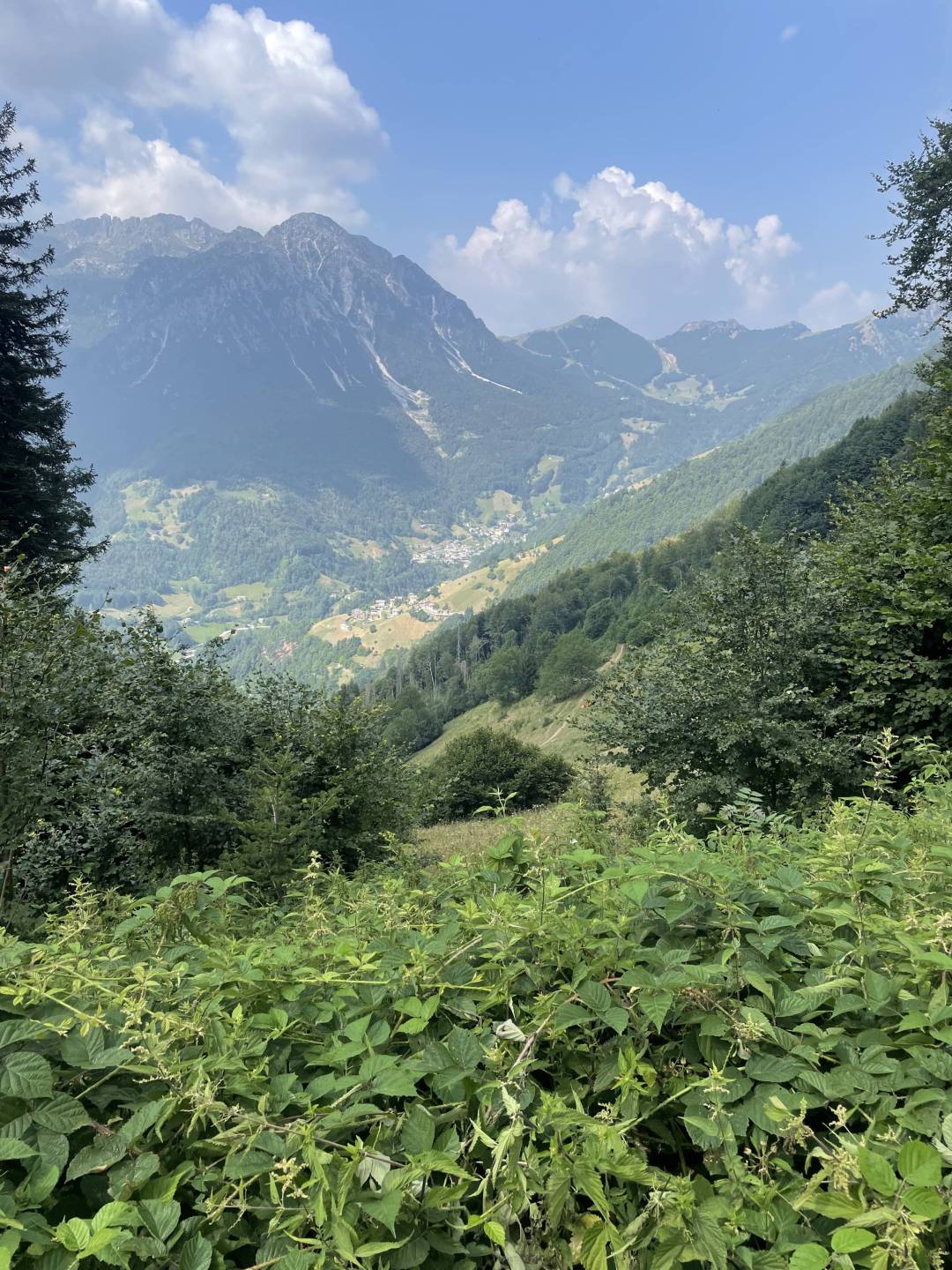
A traditional pass, part of the historic links between Ornica and Valtorta, located at an altitude of 1,348 metres. It offers fine views over the Valtorta basin and the Orobic-Lecco ridge.
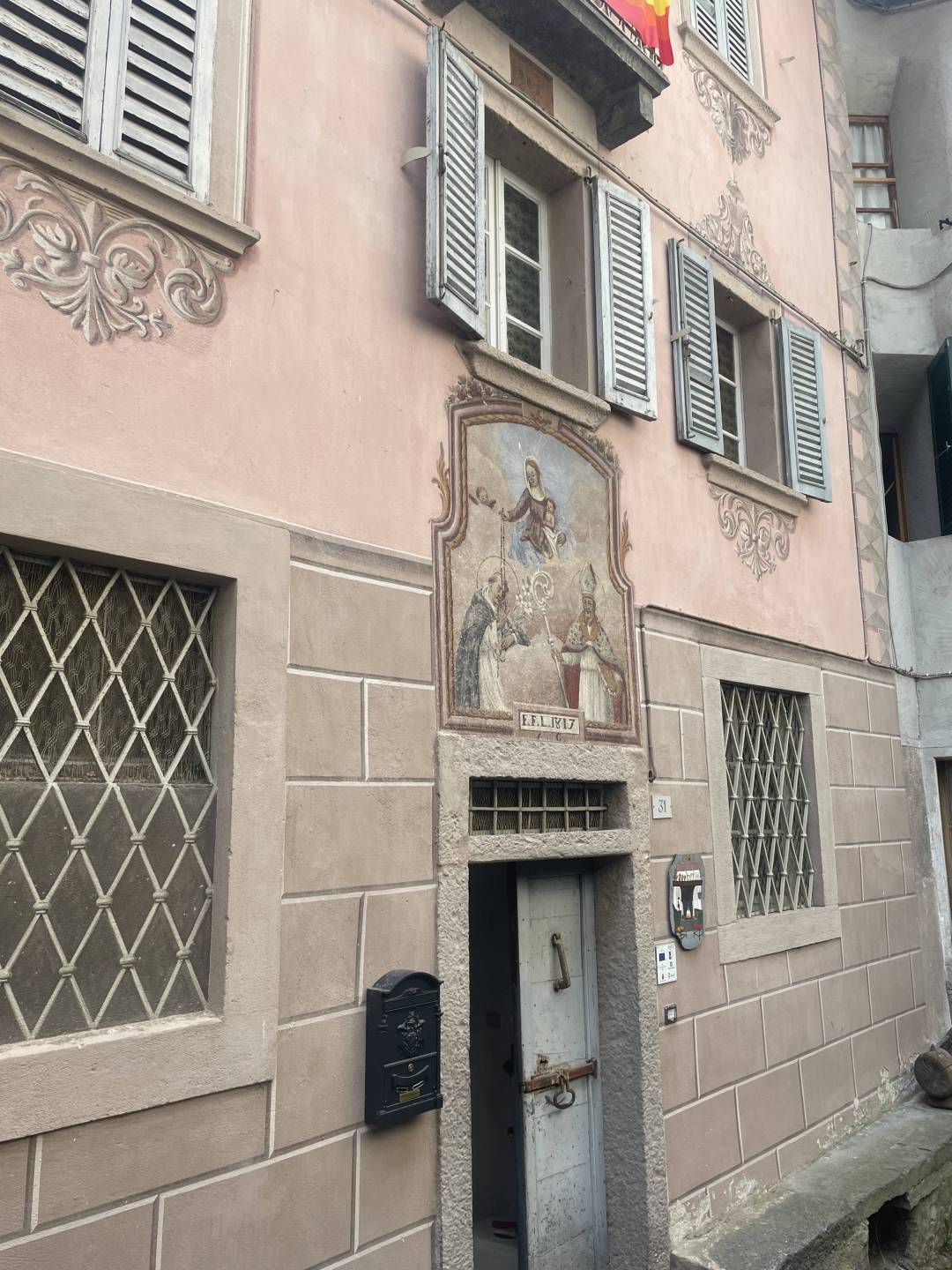
Many of the buildings in Via Fratelli Calvi have robust, ornate portals. Some buildings have features indicating the importance of their historical owners: this is the case of Palazzo Gualteroni (n° 31) whose history is closely connected to that of the town itself. The house bears evidence of 19th-century renovation work, with a stone portal and windows embellished with floral decorations. In the centre of the façade there is a fresco of Saint Ambrose, patron saint of the village, painted in 1817.